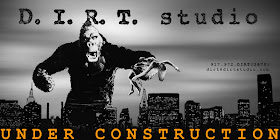"Not everybody sees the art in the same way,
only an artist viewing art
knows the ecstasy or dread,
and
this viewing takes place in time.
A great artist can make art
by simply casting a glance..."
ROBERT SMITHSON
SECOND WAVE OF MODERNISM II
Landscape
Complexity and Transformation
only an artist viewing art
knows the ecstasy or dread,
and
this viewing takes place in time.
A great artist can make art
by simply casting a glance..."
ROBERT SMITHSON
SECOND WAVE OF MODERNISM II
Landscape
Complexity and Transformation
The Cultural Landscape Foundation
November 18, 2011
November 18, 2011
I will listen to anyone who tries to articulate how the memories of their childhood landscape, influence the work they do today. Charles Birnbaum, Founder and President of The Cultural Landscape Foundation asked all the participants at the Second Wave of Modernism conference to frame their remarks in a personal way. Everyone stuck to the script. From the Forest Cemetary in Stockholm to the industrial oil tanks of Newark, New Jersey to the desert of Yakima, Washington, each landscape architect articulated how their early versions of nature informed their future professional bias.
I found the most intriguing person at the conference, THE BAD GIRL of landscape architecture: Julie Bargmann, founder of D.I.R.T. studio. The name of the her firm, tells a lot about what she is interested in.
Bargmann started off as a sculptor and her addiction to looking at the work of artists (Robert Irwin, Eve Hesse and Donald Judd) are keys to her working relationship to the landscape. "I want to find the untitled in the landscape." Her work is about not imposing form on the site, but finding the focus within a site. Bargmann likes working with regenerative landscapes. The industrial waste sites that populate America, are the places that speak to her. For Bargmann many of these sites are archaeology.... making visible the crafts and industries that once employed people and provided their livelihoods. This kind of work isn't for everyone. "It's a messy experience."
Bargmann lost the competition for the High Line, which she mentioned without much difficulty. Without saying much, you could understand how differently she would have approached the project. It might have remained a place layered with history.

"These orphaned landscapes are our national parks. They are the new urban frontier. It's a wild landscape of a different kind."
I have been considering this question of wild landscapes, and how to make them visible; as I work in a place where the "soil" is construction fill, the landscape harmed by intervention of the building of the Triboro Bridge and general neglect over time. Maybe, "a great artist can make art by simply casting a glance," but I am finding it a lot harder.
Bargmann started off as a sculptor and her addiction to looking at the work of artists (Robert Irwin, Eve Hesse and Donald Judd) are keys to her working relationship to the landscape. "I want to find the untitled in the landscape." Her work is about not imposing form on the site, but finding the focus within a site. Bargmann likes working with regenerative landscapes. The industrial waste sites that populate America, are the places that speak to her. For Bargmann many of these sites are archaeology.... making visible the crafts and industries that once employed people and provided their livelihoods. This kind of work isn't for everyone. "It's a messy experience."
Bargmann lost the competition for the High Line, which she mentioned without much difficulty. Without saying much, you could understand how differently she would have approached the project. It might have remained a place layered with history.

Using the rubble from demolition at the Urban Outfitters project in Philadelphia to create a hardscape and the curvilinear steel from railroad track that once existed here.
"These orphaned landscapes are our national parks. They are the new urban frontier. It's a wild landscape of a different kind."
I have been considering this question of wild landscapes, and how to make them visible; as I work in a place where the "soil" is construction fill, the landscape harmed by intervention of the building of the Triboro Bridge and general neglect over time. Maybe, "a great artist can make art by simply casting a glance," but I am finding it a lot harder.





cheap nfl jerseys
ReplyDeletecoach outlet online
new balance outlet
coach factory outlet online
longchamp handbags
michael kors outlet online
nike air max
nike free run flyknit
hollister clothing store
michael kors outlet clearance
timberland uk
sac longchamp pliage
coach outlet
hugo boss outlet online
toms outlet store
birkenstock outlet
michael kors outlet stores
longchamp bag
skechers shoes
uggs outlet
bottega veneta
ghd hair straighteners
ralph lauren
coach outlet store online
ray ban outlet store online
michael kors outlet
nba jerseys wholesale
abercrombie outlet
coach purses
coach factory outlet online
gucci outlet online
coach factory outlet
cartier watches
bottega veneta handbags
canada goose uk
201685yuanyuan